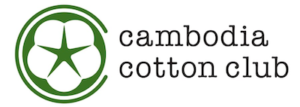I found a company participating in the Tohoku Cotton Project.
When I asked how much Tohoku cotton was used in their products, they immediately told me.
The blended ratio (Konritsu = percentage of Tohoku cotton used) of products made with Tohoku cotton was: Product A = 2%, Product B = 2%, and Product C = 1.4%. This means that most of the fiber is supplemented with organic cotton from overseas.
The following is the gist of the question-and-answer session on that organic cotton.
Atsushi Furusawa; "Your company specializes in organic cotton, and Sumitomo Chemical is participating in the Tohoku Cotton Project and has already registered four new agricultural chemicals with the Ministry of Agriculture, Forestry and Fisheries for use in growing Tohoku cotton."
Contact person: "I did not know that Sumitomo Chemical participated in this project. To begin with, we do not label our Tohoku cotton products as organic cotton."
Atsushi Furusawa: "Could you define organic cotton?"
Contact person: "There are many different definitions of this. It varies from certification organization to certification organization, and it also varies in the way companies perceive it. There are a number of definitions."
Atsushi Furusawa; "I used to think that organic cotton did not use pesticides or chemical fertilizers. But in fact, pesticides and chemical fertilizers approved by certification organizations are used. What are your thoughts on this point?"
Contact person; "Misleading... hmm ....... Well, that's right. That's why we try to minimize misleading expressions such as "organic cotton is gentle to the skin."
Atsushi Furusawa; "I see. Certainly, I feel that your company's website is carefully restrained and explanatory when compared to other companies."
Contact person; "In the end, each company is different when it comes to the description of organic cotton. We are not selling organic certification either. We have to leave it up to the consumer to decide. If there is a misleading representation on our website, we will correct it immediately."
###############
So what is the thinking in the country?
By the Ministry of Economy, Trade and Industry (METI), between 2009 and 2010. In order to develop guidelines for organic cotton labeling, a meeting was held three times to bring together company officials, university professors, and consultants (companies that provide solutions to some issues faced by corporations, etc.) to develop guidelines (guidelines, indicators, and rules that are considered appropriate to follow). Three meetings were held. After reading the final draft of those guidelines, I called the Textile Division of the Ministry of Economy, Trade and Industry and asked.
Atsushi Furusawa; "There are misleading company websites and in-store sales descriptions of organic cotton products, how is this perceived by the Textile Division of METI?"
Contact person: "The labeling guidelines are not about the definition of organic cotton fiber. So it is not a discussion about the organic cotton fiber itself."
Atsushi Furusawa: "So what was the premise and purpose of the survey?"
Contact person: "We discussed what kind of labeling should be used when related companies indicate to consumers that 'this is a product made from organic cotton. We examined what companies that handle organic cotton should communicate to consumers, and METI's Textile Division was not involved in the definition of organic cotton fiber itself."
###############
Here is an excerpt of what the final draft of these labeling guidelines says.
Somewhat differently from the METI representative we interviewed by phone, these guidelines include
○ Organic cotton is "non-genetically modified cotton produced without the use of pesticides or chemical fertilizers in soil that has been free of pesticides and chemical fertilizers for approximately three years, and that is certified as such. and , Footnote 4 on page 20 of the final draft guidelines states.
It also states the following
○ "Organic cotton products are defined as products that can be proven to contain organic cotton as part or all of their raw materials."
What I was very interested in was the following
It states, "When labeling the name 'organic cotton,' the label shall indicate 'the percentage of organic cotton blended in the product' and shall state 'Organic cotton XX% blended product. It goes on to say that 'matters that may cause misidentification to consumers shall not be described.
The above guidelines are not legally binding.
Currently, it is possible to appeal to consumers as an organic cotton product even if the product is not made from 100% organic cotton.
The following expressions were also only included in the guidelines as "examples of confusing terms" for reference information.
Example 1) Organic cotton cures atopy.
Example 2) Organic cotton is healthy.
Example 3) Organic cotton is safe.
Example 4) Organic cotton is gentle to the skin.
What are the legally binding national regulations?
I contacted the Consumer Affairs Agency's section in charge of the Household Goods Quality Labeling Law, etc.
( to be continued )
